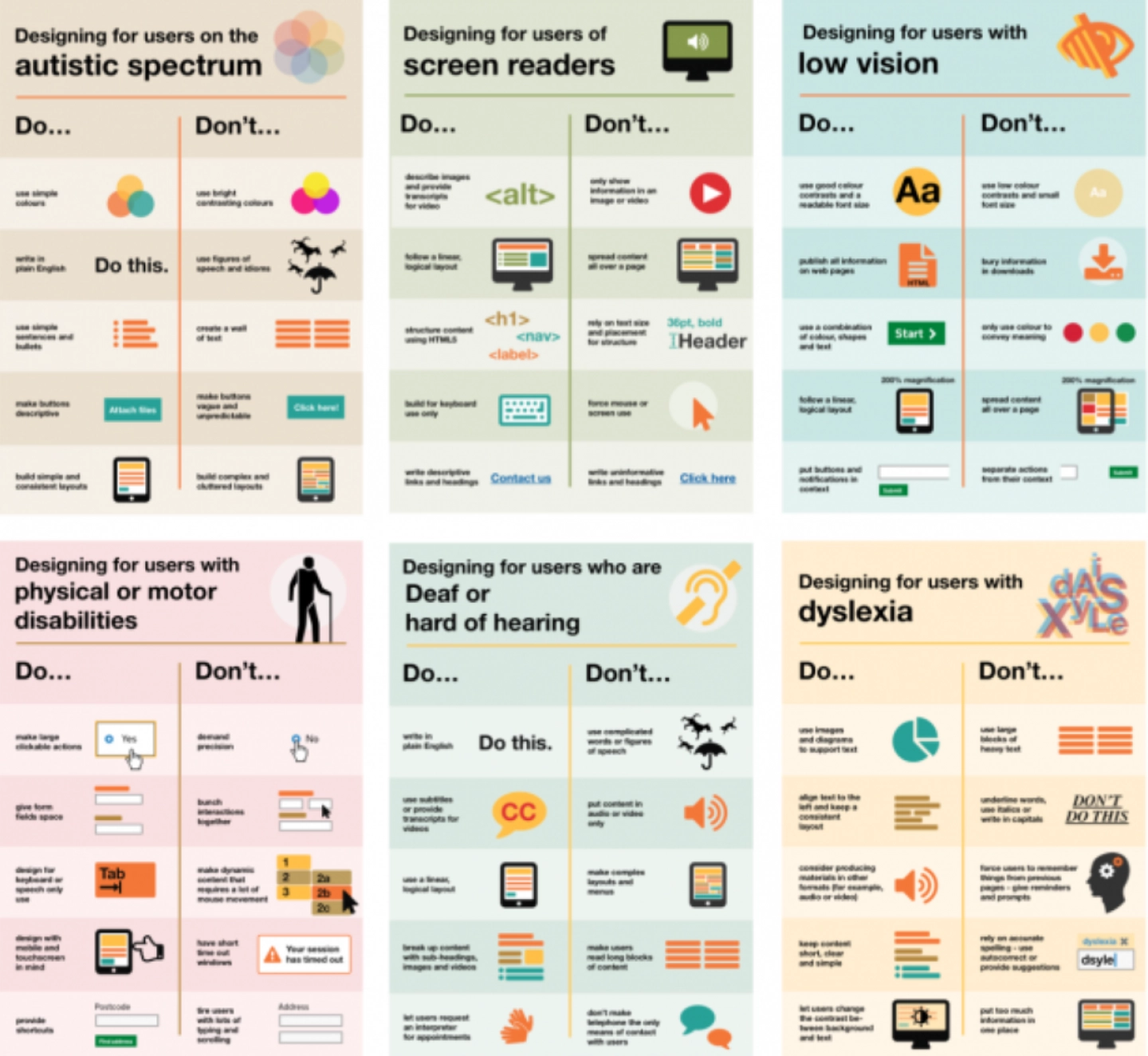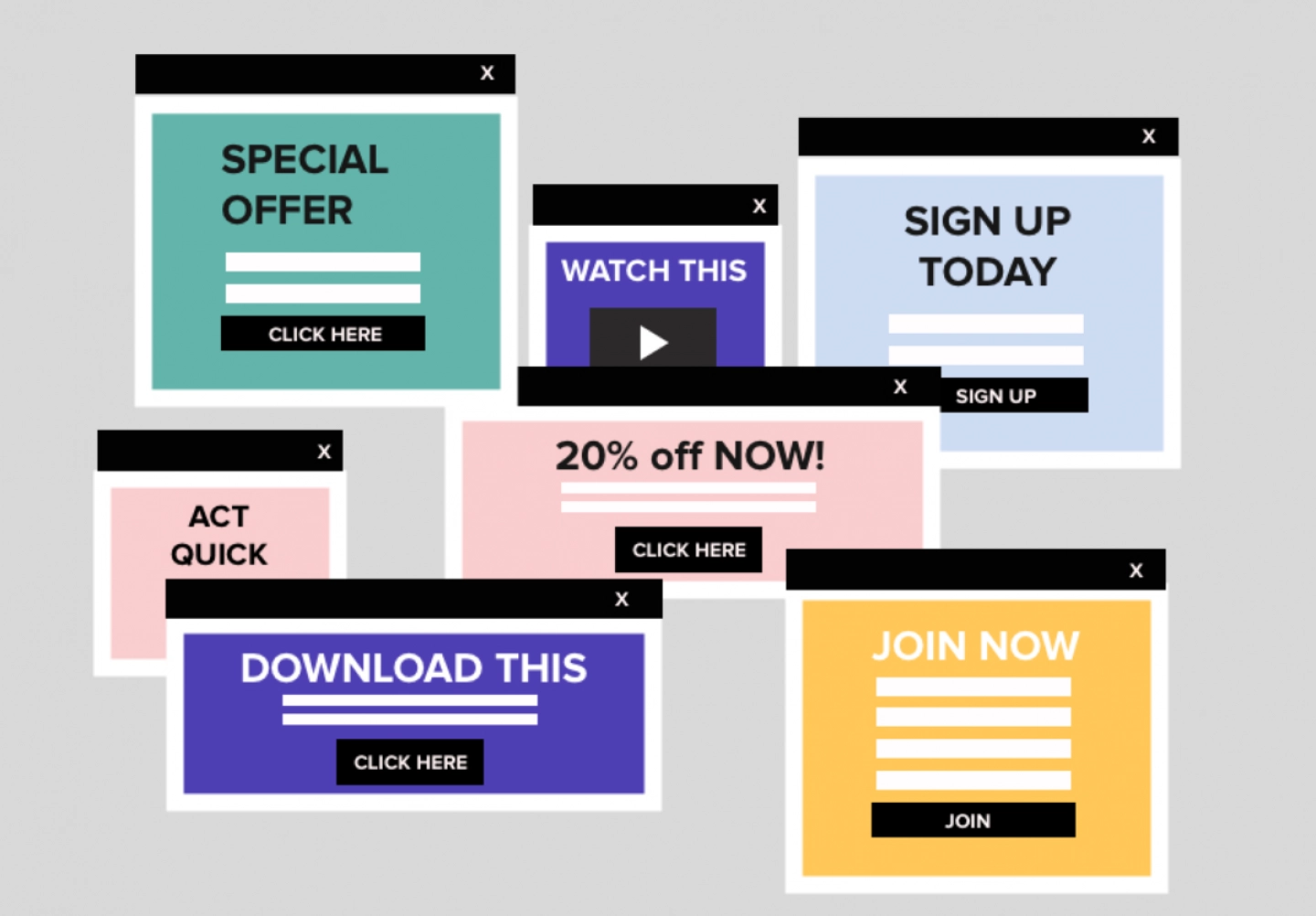In 2016 the accessibility group in the Home Office digital team created a superb set of posters that were a very clear and concise way to easily see the do’s and don’ts you should be aware of when designing for accessibility.

That was 6 years ago and although the practice is now more baked into web design and development these days, it is still in some areas falling well short.
What’s happening in the ‘real’ world?
It’s always good to look at how accessibility is being taken into consideration in adjacent areas to online and the bricks and mortar, retail shopping space is often a great place to look.
‘Anxiety’ is one of the accessibility categories that is rightfully getting some attention at the moment. People with anxiety can often have other needs, for instance Autism, and it is a very real experience that needs to be taken seriously.
There is change on the horizon
Some stores are even asking their staff not to approach customers too soon when they enter the store and to give them a chance to acclimatise themselves. Also, some are now offering quiet time shopping, fully aware of shoppers with anxiety and certain needs.
The UK superstore, Tesco has now made this a permanent fixture of their stores at set times within the week.
“Tesco reported that people can feel, see and experience the world differently, and for their customers with Autism, the shopping experience may sometimes feel a bit overwhelming.
A calmer environment can also be better for their elderly customers, ones shopping with young children, or customers who may be struggling with mental health.
According to the supermarket, 20 per cent of the population in the UK have a disability.”
Source: https://www.retailgazette.co.uk/blog/2021/10/tesco-makes-its-quiet-hour-a-permanent-fixture/
What about your website experience?
What is your website design and user experience like?
Is it like this;
Instant demands come thick and fast in a lexicon that users don’t understand, tick.
It needs decoding, tick.
But they better hurry up as it’s money off if you sign up today, tick.
Money off your first purchase, tick, tickety, tick!...
Close all those pop up messages down please!

Many of these pop ups are called interstitials and some of them are legal requirements, such as age gates on alcoholic brand’s websites and cookies policies. However, most of them are intrusive advertisements and Google has some rules around them.
Google knows users find them annoying, you will be marked down if they don’t follow a set of guidelines such as taking up too much of the page real estate so you can’t see the content behind them, timed closing buttons.. etc. Thankfully some of these rules can have a positive effect on accessibility by enforcing a better user experience.
Ways to reduce anxiety on your website
Anxiety is very real and many websites, even some of those offering vital services aren’t dealing with it and therefore failing to prevent digital exclusion.How many times have you been stressed and shouting at a website when you’re trying to complete a task? If you are non-disabled, imagine how more frustrating a website like that would be for a disabled person!
Think about the timing and frequency of those pop ups
Give users enough time to complete actions, don’t rush users
Explain what will happen after completing a service
Make important information clear, don’t hide it or footnote it
Give users the support they need to complete a service or task
On a form, let users check their answers before they submit them
In summary
If your website is your main marketing tool, you need to make sure it meets accessibility standards, so you don't exclude potential customers. You are potentially turning off a large part of your audience when your web design and user experience hasn’t taken this into account.
Change the timings, frequency and nature of your pop ups and see what happens in your analytics. Are you actively helping users on your website or are you just giving them things to dismiss and adding to the cognitive load which in turn is building a digital exclusion environment?
How Creode can help you
At Creode, we are very well versed in accessibility standards and website optimisation. As part of our continuous improvement approach we can help you meet the accessibility guidelines and also improve your website performance.
*Resources:
The UK Home Office accessibility guidelines posters - https://ukhomeoffice.github.io...